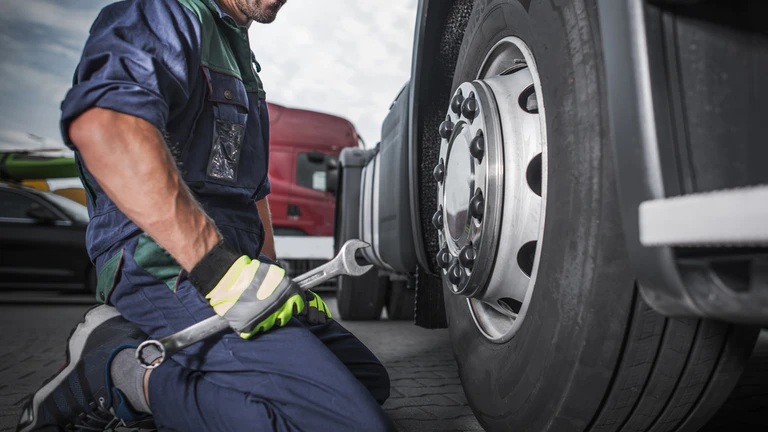The truck tire service industry has taken giant leaps in protecting technicians by educating them on dangers of emergency road service. However, fleets can still better educate drivers on where and when to stop in the event of a tire failure
Ask truck tire service technicians what scares them the most and they will say working on the side of a highway. I’m just glad my times on the shoulder of the interstate were limited to when I was young and fearless. There were definitely instances where I wasn’t concerned for my own safety when I clearly should have been.
As a family member in the family tire dealership, I always felt I had to prove something. The rank and file already had plenty of reasons to dislike me, but I never cared. I wanted to be respected, so I believed that taking the side-of-the-highway calls would prove I was not there just because I had the same last name as the owners.
That same prideful blindness to the dangers of emergency road service has led to fatalities in the truck tire service industry. I worked on a case where a technician tried to change a trailer tire on the curve of an interstate highway in the middle of the night with the vehicles literally parked on the fog line. A vehicle in the right lane struck the service vehicle and drove it under the trailer and on top of the technician. Sadly enough, there was an exit about a half mile down the road with plenty of room to replace the tires.
On the other hand, a recent accident in South Carolina tragically claimed the life of a Florida man and seriously injured a teenage girl when the pickup they were traveling in struck the back of an emergency road service vehicle. The pickup and service truck were totaled, but the technician was not injured because he followed the proper safety guidelines for servicing a truck tire on the side of a road or highway. It appears that everything was done by the book, so the carnage was limited to the pickup, the service truck, and the rear of the disabled trailer.
In that instance, there was plenty of room to work as the tractor-trailer and service truck were easily five feet from the fog line. The service truck was parked directly behind the trailer with the wheels facing straight ahead. Based on early reports, there was about 30 feet between the two vehicles (as required) prior to the accident. Photos of the scene show how the pickup and the rear of the service truck absorbed most of the energy before it reached the trailer. While every loss of life is tragic, the fact that the technician walked away was an important message to the road service industry that safety procedures must be followed.
Fortunately, the driver of the tractor-trailer did his part to help protect the road service technician. The vehicle was stopped on the shoulder with plenty of room to work. With the reflective devices and hazard lights on the tractor-trailer in addition to the amber beacon lights and strobes on the service truck, there were additional warnings to oncoming traffic that there was an active work area on the side of the highway. Some companies have even introduced the large portable orange construction signs used by road crews to warn that vehicle service is taking place. In most cases, drivers will slow down and/or move over when they see multiple warnings.
The truck tire service industry has taken giant leaps in protecting technicians by educating them on the hazards. While practically anyone with a pickup truck and a compressor can perform emergency road service, one man lost his life on the side of a Connecticut interstate because his pickup was in the worst possible spot while he was working between disabled vehicles. Apparently, he didn’t know about the “kill zone” that exists because he was in it when he lost his life.
Hazards related to servicing truck tires on the side of the road have not changed, but the industry has mitigated some of the risk. Bravado still exists in the emergency road service community, however, so we need drivers to play their part in protecting the people who get them back on the road when a tire or tires fail(s) in service. While I understand the economic ramifications of purchasing new tires and wheels instead of just new tires, there are going to be times when the driver has to keep driving to reach a safe location. There is a fine line between saving money and endangering the life of an emergency road service technician.
If the fleets can better educate drivers on where and when to stop in the event of a tire failure, then we can collectively improve safety in tire and trucking industries. The hope is that drivers will consider all of the factors before deciding to pull over or slow down to find a safe location to service the tires. Likewise, we hope that more fleets will support the occasional extra wheel or two on the invoice because the driver was concerned about the safety of the person working in harm’s way to get them back up and running.
Source: https://www.fleetowner.com/
CUT COTS OF THE FLEET WITH OUR AUDIT PROGRAM
The audit is a key tool to know the overall status and provide the analysis, the assessment, the advice, the suggestions and the actions to take in order to cut costs and increase the efficiency and efficacy of the fleet. We propose the following fleet management audit.




